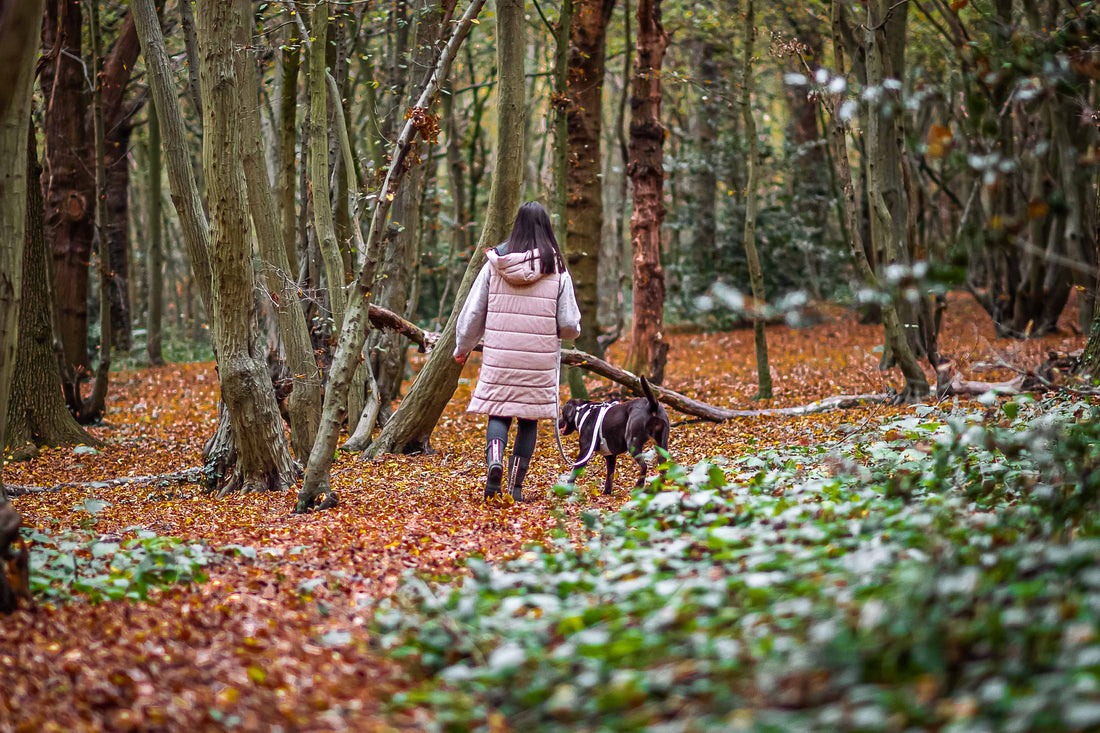
How to Train Your Dog to Walk Nicely on a Lead
Walking your dog should be a pleasure, not a tug of war.
If your dog pulls, weaves or tries to chase every squirrel in sight, you’re not alone — lead training is one of the most common struggles for dog parents.
With a little patience and the right approach, you can teach your dog to walk calmly at your side. Here’s how to make walk time enjoyable for you both.
Start with the Right Equipment
Before you begin training, it’s important to set your dog up for success.
A well-fitted dog harness gives you better control and is much kinder to your dog’s body than a collar alone.
Choose a strong, comfortable lead — ideally around 1.2 to 1.5 metres long — which allows a little movement without letting your dog wander off.
Avoid retractable leads while training; they encourage pulling and give you far less control.
Pick the Right Time and Place
Start your training somewhere quiet with few distractions.
Your back garden, a quiet street, or an empty park early in the morning are great options.
When your dog is already excited or distracted by people, cars, or other animals, it will be much harder for them to focus.
Teach ‘Heel’ or ‘Walk Nicely’
Training your dog to walk nicely starts with rewarding them for staying by your side.
Here’s a simple step-by-step:
1. Hold a few treats in your pocket or a pouch.
2. Stand still and wait for your dog to come to your side.
3. When they do, reward them immediately with a treat and gentle praise.
4. Take a few steps forward — if your dog stays close, reward again.
Repeat this until your dog understands that being next to you brings good things.
Top Tip: Use treats your dog really loves — this keeps them motivated.
If Your Dog Pulls, Stop
One of the biggest mistakes is letting your dog pull you along.
If your dog starts pulling, stop walking immediately. Stand still and wait until they come back towards you.
Only when the lead is slack should you start moving again.
This teaches your dog that pulling doesn’t get them where they want to go — but staying close to you does.
It takes consistency, but it’s highly effective over time.
Keep Training Sessions Short
Dogs learn best with short, positive sessions.
Aim for 5–10 minute training walks at first. Once your dog improves, you can gradually extend your walks.
Remember, every walk is a chance to reinforce good habits. Even small improvements are worth celebrating.
Stay Patient and Positive
Training lead manners isn’t something that happens overnight.
There will be setbacks — especially if your dog gets excited by another dog, a bird, or a cyclist.
Stay calm, be consistent, and don’t punish pulling. Positive reinforcement builds trust and encourages your dog to keep trying.
Consider Professional Help if Needed
If you’re struggling or if your dog pulls so much that walks become stressful, there’s no shame in getting help.
A qualified trainer can offer personalised advice and techniques suited to your dog’s needs.
